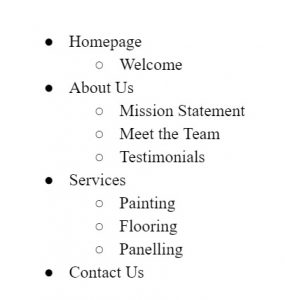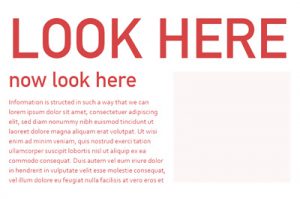How To Prepare for Your Website
Designing a new website requires a few key elements that any web designer should ask you to prepare. This blog post is intended to help you get a head start on what you need to do when you’re considering a new website.
Purpose
Before starting the process of building a website, it is important to understand what you want to get out of it. What is the purpose of this website? What is it accomplishing for your business or organisation’s objectives? Should it primarily raise awareness about your business, or display work you’ve done? Or is it a shop with the focus on creating a point of sale? Or a mix of these?
Our websites are extremely flexible and customizable, but it will help us greatly if you have a sense of what your needs are from the start. This article has some great questions to ask yourself and your team as you begin to define the purpose of your website.
Sitemap
What information do you want to include on your website?
What information is most important, and what should be tucked away on smaller pages? A sitemap is an outline on paper that helps you to visually layout the big ideas of your website. It can be a fancy grid or as simple as a word document, but the point is that it helps you decide the hierarchy of information on your site.


Hierarchy of Information is a principle of design that dictates that the size/location/visibility of a piece of information should reflect the value of that information. Intuitively viewers will see the biggest and brightest information on a page first, so it’s efficient to make sure that order flows from most important to least.

A website works the same way. You want viewers to find the information they’re looking for easily, so you need to distill what information will be most relevant to viewers and then prioritize them accordingly. We will help you translate the layout of your website to reflect this hierarchy visually, but, it will be easier if you already know what you want to prioritize.
Creating Content
Getting quality content to us as soon as possible goes a long way in developing the individuality of the site. While we work with the website’s styling and structure, our creative ability is enhanced when we can build your unique content into the design of the overall site.
But what is content? There are usually two main types
Photos
Photos for your website are critical to get on quickly because they usually take longer and are more essential to the structure/design of the site. There’s really not much we can do to personalize your site until we have photos to use as backgrounds, headings, posts, profiles, and more: we structure websites around images. If you’re not sure where to start, Here’s an article about how to take great photos for your website.
Text
Text is the fastest way to explain to potential clients who you are, what you do, and how you do it. The prose doesn’t have to be perfect, but the more clearly and succinctly you describe your business, the faster a viewer can move through your site. However, it’s important to remember that if you have a good hierarchy, it’s ok to have large chunks of informative text, as long as it’s well organized and presented. Text like subheadings, summaries, and short brand statements (in addition to more substantive long text) are all helpful in directing users around the site.
Tip: If you’re struggling to begin writing, it can be helpful to look at competitors websites and see what they’ve written in order to understand what information seems to be most relevant for your industry.
Some pitfalls to avoid or be aware of…
1. The project manager needs the authority to sign off on designs and decisions. Make sure you know who’s in charge; changes to the design or functionality of a website at the wrong stage in the process can lead to time and cost overruns, and added stress! So, make sure that you have the final say, or that all the stakeholders are brought along in the process.
2. Understand what you’re signing on for. For example, if you want to list all your services on your site, then you will need to write descriptions of every service you offer. This kind of work we as designers can’t help with, since you know your product/services best, and — although it will be rewarding — it can be time consuming. So, creating your content should be your first priority and should be begun before or while the site is being designed.
3. Keeping up to date. It’s helpful for SEO to have a blog or integrated social media on your website, however those pages must be maintained. If you are going to link your facebook or instagram on your site, choose someone to be in charge of those accounts, updating them at least every now and then. If your blogs/social medias have fallen into disuse, leave them off the site unless you can revive them.